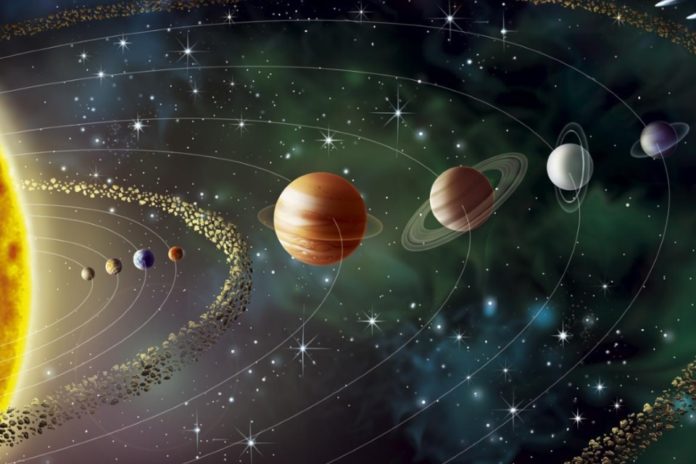
An international team of astronomers led by University of Hertfordshire have discovered 60 new planets, which orbit stars that are close to our Earth’s solar system, including a rocky “super Earth.” The team of scientists found evidence of an additional 54 potential planets, bringing the prospective discovery of new worlds to 114.
The team have announced that they have also spotted one of these planets which seem to be a rocky “super Earth”, called Gliese 411b. Gliese 411b is a hot super-Earth, which has a rocky surface and is located in the fourth-nearest star system to the sun, making it the third-nearest planetary system to the Sun, according to the U.K.’s University of Hertfordshire, which participated in the research. In the hunt for life outside the Earth, researchers said, the discovery boosts the chances of finding a new planet with hospitable conditions, that might be able to support life because it is warm.

Researchers say the planets are in our “immediate Solar neighbourhood” but that Gliese 411b/GJ 411b is of particular interest. Gliese 411b (also known as Lalande 21185 or GJ 411b) orbits around a star that has been named Gliese 411, or GJ 411. The significance of its discovery demonstrates that virtually all the nearest stars to the Sun have planets orbiting them, and some of these planets that ‘could be like Earth.’
Despite the “super Earth” label, Dr. Mikko Tuomi, from the Centre for Astrophysics at the University of Hertfordshire, claims Gliese 411b is too hot for life to exist on its surface. Gliese 411 and Gliese 411b are located around 8 light years (A light year = 6 trillion miles) from Earth.
One the other hand, another recently discovered Earth-like planet that has conditions similar to Earth –named “Proxima b”, is about four light years away from Earth. This body orbits a red dwarf star called Proxima Centauri, a relatively cool and small star. Mikko Tuomi said these discoveries are significant, as Proxima b orbits Proxima Centauri (its star) at a similar distance that the Earth orbits the Sun, possibly offering all the ingredients for life.
The discoveries, which are part of the Lick-Carnegie Exoplanet Survey, are based on observations taken over 20 years by U.S. astronomers using the Keck-I telescope in Hawaii. During the course of the research, the team obtained almost 61,000 observations of 1,600 stars, which is recently made and available to the public. Sponsored by NASA and the National Space Organization, the Lick-Carnegie Exoplanet Survey, which was started in 1996 by astronomers named Geoffrey Marcy and Steve Vogt from the University of California, and Paul Butler from the Carnegie Institute of Science, in Washington.
Dr. Mikko Tuomi, who was the only European-based scientist working on the project, led the team’s data analysis efforts that expressed the existence of the newly reported planets. The 60 newly-discovered planets are somewhere between 20 to 300 light years away from earth. The Lick-Carnegie Exoplanet Survey puts to use the talents of planet hunters from a number of organizations, including the University of California (UC) Santa Cruz, the Carnegie Institution for Science in Washington, D.C. and MIT; as well as NASA, of course, and the National Science Foundation.
“It is fascinating to think that when we look at the nearest stars, all of them appear to have planets orbiting them,” said Dr. Mikko Tuomi of the University of Hertfordshire.
“This is something astronomers were not convinced about, even as little as five years ago.”
“These new planets also help us better understand the formation processes of planetary systems and provide interesting targets for future efforts to image the planets directly,” Tuomi added.
Dr Butler said: “This paper and data release is one of my crowning achievements as an astronomer.”
“It represents a good chunk of my life’s work.”
The group’s results were based on measuring small periodic changes in the target star’s colours, indirectly expressing the existences of the planets. Scientists detected the signatures of planets using the iodine cell radial celerity technique, which imposes spectral lines onto the stellar absorption lines from an iodine gaseous absorption cell. While the lines of the star move minutely in response to orbiting bodies like planets, the iodine lines do not move, giving an accurate reference point.
The group’s paper has been accepted for publication and will be published in The Astrophysical Journal.



























